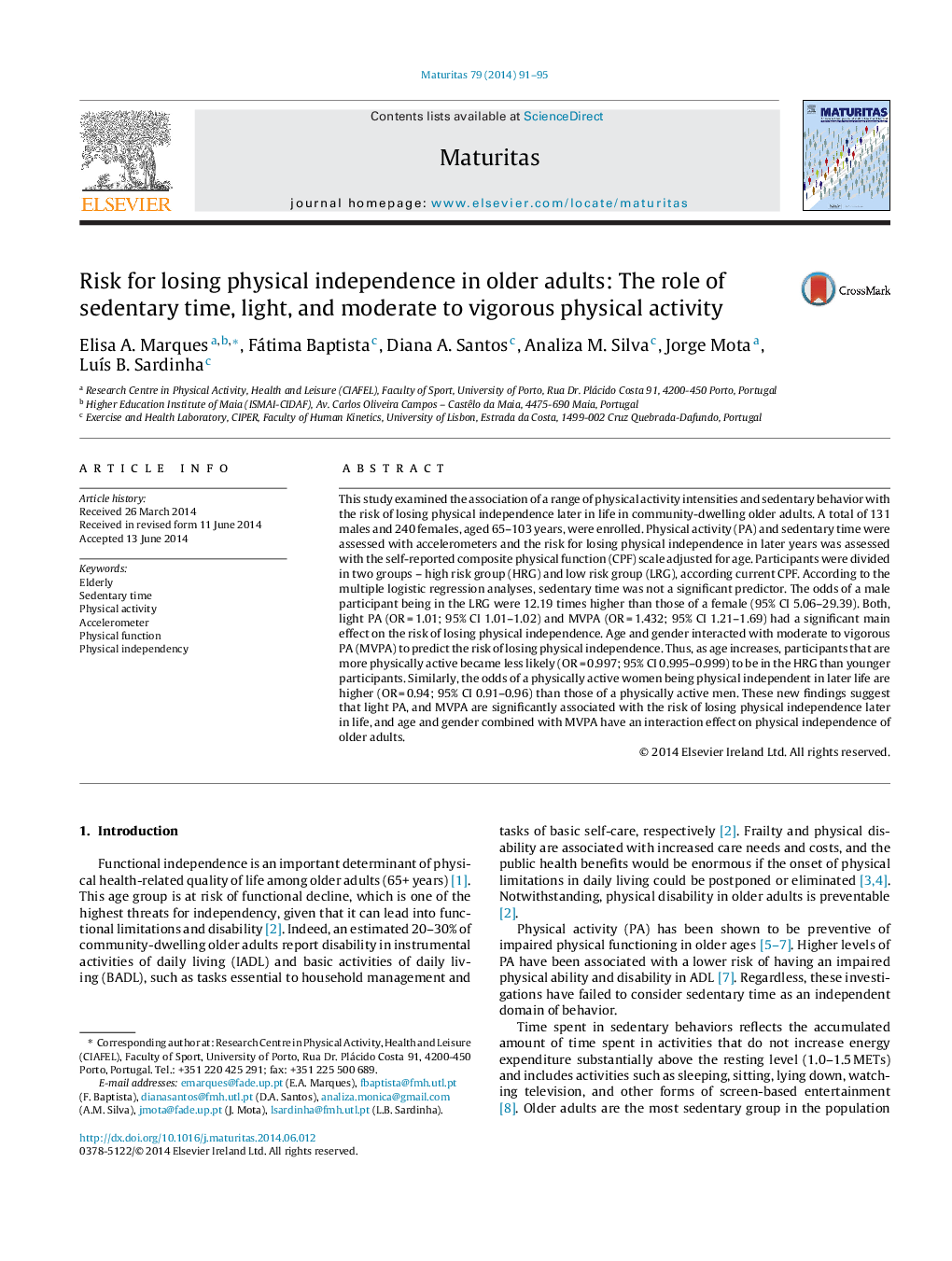| Article ID | Journal | Published Year | Pages | File Type |
|---|---|---|---|---|
| 1917338 | Maturitas | 2014 | 5 Pages |
This study examined the association of a range of physical activity intensities and sedentary behavior with the risk of losing physical independence later in life in community-dwelling older adults. A total of 131 males and 240 females, aged 65–103 years, were enrolled. Physical activity (PA) and sedentary time were assessed with accelerometers and the risk for losing physical independence in later years was assessed with the self-reported composite physical function (CPF) scale adjusted for age. Participants were divided in two groups – high risk group (HRG) and low risk group (LRG), according current CPF. According to the multiple logistic regression analyses, sedentary time was not a significant predictor. The odds of a male participant being in the LRG were 12.19 times higher than those of a female (95% CI 5.06–29.39). Both, light PA (OR = 1.01; 95% CI 1.01–1.02) and MVPA (OR = 1.432; 95% CI 1.21–1.69) had a significant main effect on the risk of losing physical independence. Age and gender interacted with moderate to vigorous PA (MVPA) to predict the risk of losing physical independence. Thus, as age increases, participants that are more physically active became less likely (OR = 0.997; 95% CI 0.995–0.999) to be in the HRG than younger participants. Similarly, the odds of a physically active women being physical independent in later life are higher (OR = 0.94; 95% CI 0.91–0.96) than those of a physically active men. These new findings suggest that light PA, and MVPA are significantly associated with the risk of losing physical independence later in life, and age and gender combined with MVPA have an interaction effect on physical independence of older adults.
